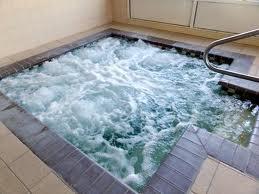
Lawsuits. While some are obviously outlandish and, in some cases, frivolous, eliciting a collective eye-roll among rational people, many lawsuits offer a window into circumstances and sources of risk, put another way, “dangers,” we may not have considered, from sources we would have otherwise thought safe. As those lawsuits relate to swimming, and the aquatic environment, which is of chief concern to us here at Infant Swimming Resource, we follow all such lawsuits alleging injury arising from an aquatic environment such that we can continually revise our ISR Safety Protocols to make sure our next ISR Lesson, after more than 8.5 Million, is our safest to date.
Recently, Infant Swimming Resource has become aware of several lawsuits filed against cities and private aquatics facilities alike alleging illness, physical injury/trauma, and, in fact, death. One such lawsuit ISR will be following closely was filed last month, March 2017, against a prominent health club, LA Fitness, alleging an improperly maintained aquatic environment resulting in the contraction of Legionnaire’s Disease, and in fact, shortly after the reported contraction, the Nassau County Health Department shut the pool at the affected location.
Legionnaire’s disease, which is a type of atypical pneumonia, is spread by the bacteria Legionella, which can be rampant in warm bodies of water without adequate levels of disinfectants like chlorine. According to the Centers for Disease Control, each year, between 8,000-18,000 people in the United States are hospitalized with Legionnaire’s. Of particular concern is the fact that Legionnaire’s1 can be readily spread by inhaling the steam or mist emanating from improperly maintained hot tubs which are oftentimes adjacent to or, an integrated part of, swimming pools, with a specific focus on indoor aquatic locations. While your ISR Instructor will monitor the aquatic environment in which ISR Lessons are taking place, we know as well as you do that your time with your family’s ISR Instructor is likely only a small fraction of the cumulative time your family will spend in the water each year and beyond, which is why it’s important for parents to know that safe pools and most notably in this regard, hottubs, should read free chlorine of 2-4ppm or 4-6pm for bromine, and in all cases, a pH between 7.2 and 7.8
Similarly, ISR is aware of several lawsuits alleging, or having alleged that an improperly cared for pool was responsible for serious injury and even death. One such lawsuit lodged against Choice Hotels International and The Quality Inn Wickliffe location, alleging, among other things that a 23 year old man drowned on account of a lack of proper pool water clarity giving the misimpression about the depth of the pool. Similarly, the family of the victim, in their wrongful death lawsuit allege that locating the victim was significantly and grievously delayed due to the lack of clarity, thusly: “The water clarity was so bad and deceptive to observers on the evening of the Decedent’s death that his girlfriend, two family members, and several police officers spent almost five hours searching the pool, pool area, and hotel repeatedly before an officer noticed a faint shadow at the bottom of the pool that in fact was the 6’0,” 210 lb. body of Reginald Moore.”
While, thankfully, none of these lawsuits even indirectly involve ISR or ISR students, the publicity of these events oftentimes sees ISR Instructors and ISR Staff answering questions about the safety measures we put in place, as a company, to ensure a safe pool environment. While decidedly less scientific, a good rule of thumb is a straightforward and rational first step towards evaluating a pool is a simple observation- if the condition of the pool gives you any reservation whatsoever, refrain from using the facility, and instead find a manager or lifeguard and request to see the results of what should be a daily water test...again, that test should read free chlorine of 2-4ppm or 4-6pm for bromine, and in all cases, a pH between 7.2 and 7.8, but even if the results are in line with those parameters, if something doesn’t look or smell right, don’t risk it!
In the case of the ISR lesson, each ISR Instructor is required to abide by several protocols designed to assess and mitigate risks both in and out of the water prior to each day’s lesson, which include a check of the pool’s pH and general observation of the pool environment to ensure the safety of each ISR student. To standardize that level of care, each ISR Instructor is required to undergo an annual recertification class not unlike the Continuing Medical Education or “CME” program required of medical doctors to remain licensed. This annual ISR Re-Certification ensures safety protocols are top-of-mind for all ISR Instructors and that each ISR Instructor is up to date on the most recent data from sources like the Centers for Disease Control.
At ISR, we take pride in having provided the safest and most effective survival swimming lessons to more than 300,000 students worldwide, while implementing safety protocols to ensure our Instructors and students operate in a safe environment.
1https://www.cdc.gov/healthywater/pdf/swimming/resources/legionella-factsheet.pdf